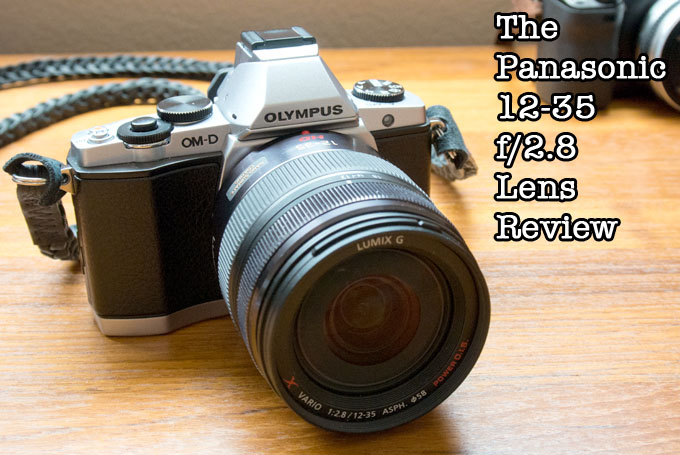
The Panasonic 12-35 f/2.8 Zoom Lens Review for Micro 4/3
Micro 4/3 has been on a roll lately. The OM-D E-M5 has catapulted the sales of this system higher than it has ever been and with a slew of hot and really fantastic lenses coming down the pipeline lately, Micro 4/3 is better than it has ever been and now competing with larger DSLR systems as far as quality goes. With the Olympus 12mm, 45mm and upcoming 75mm 1.8 we also have the Panasonic 14mm, 20 1.7, 25 1.4 and even the Voigtlander f/0.95 series with the 17mm and 25mm (offering 35 and 50mm equivalents). Micro 4/3 has come a long way since its beginnings of the E-P1 and G-F1 and their slow kit zoom lenses.
My soon to be Stepdaughter Katie 🙂 Shot at 20mm at f/2.8 – converted to B&W using Alien Skin Exposure 4 – OM-D E-M5 – ISO 3200
With all of these awesome drool worthy lenses now being offered for this system we now have one more of high pro quality to choose from. This time Panasonic decided to release a high quality fast aperture zoom that offers very high image quality, sharpness and contrast along with a versatile 12-35 focal length equaling a 24-70 in 35mm format. The best thing about this zoom is that it has a fast constant aperture of f/2.8 available so you can shoot at 12 or 35 while maintaining that f/2.8 semi fast aperture! THAT IS COOL but 1.4 or f/2 would have been even cooler. The only issue I had with this lens when it was announced was the cost. Coming in at a whopping $1299 for a micro 4/3 zoom lens is a tad on the high side I thought. This would have to be a hell of a zoom to be worth $1299 because if you want speed and high quality we have many options for less. The amazing Olympus 12mm f/2 comes in at $799 and is MUCH smaller and sleeker and attractive than the Panasonic 12-35. You can get the 12mm and 45 1.8 for less than the cost of the Panasonic zoom and have two super fast high quality primes that have faster apertures available. In fact, this is the most expensive micro 4/3 lens to date, even surpassing the Voigtlander all metal solid construction 17 and 25 f/0.95 offerings (which are excellent as well).
[ad#Adsense Blog Sq Embed Image]
But some hobbyists and shooters hate changing lenses so this is where this Panasonic zoom comes in. This is one lens you can literally buy and attach and keep on the camera much like you would a Nikon 24-70 but of course it would be a fraction of the size of that beast of a lens (which happens to be $1900). It could indeed be your one and only lens if you are all about versatility and do not mind losing some speed when compared to the prime lenses f/1.8 and f/2 speed.
12mm at f/2.8 – rich colors from RAW on the OM-D – ISO 800
What I wanted to know is if this one zoom lens could satisfy me for my Micro 4/3 usage over the primes I have used extensively. If it could be an all in one package that could meet or exceed the quality coming from the 12mm and 45mm I would be tempted for sure because this Panasonic lens is also slightly weather sealed. I say “slightly” because It is dust and “splash” proof so using it in the rain with an OM-D would be a non issue but your can’t go dunking the lens in a barrel of water or get it tooooo soaked! Even so, that feature right there is really cool because the 12 and 45 are NOT weather sealed at all. No more running for cover with my camera if it starts to rain. Nope, I could be the cool guy saying “Hahaha! My camera CAN get soaked AND still work”!
So after reading up on this lens I decided to check one out for myself to shoot on my OM-D exclusively for a while. Could I be happy with one lens and one lens only on the OM-D? I was about to find out…
I love having a 24mm equivalent focal length on the OM-D and with the 12-35 you can go from 24-70 in a snap and retain beautiful quality. This one was shot at 12mm (24) at f/2.8 – I applied a color film filter in Alien Skin 4 as I love that plug-in!
–
In beautiful Sedona – 12-35 at 35 and f/4
Panasonic and Micro 4/3 lenses
I have always enjoyed lenses made by Panasonic for micro 4/3 as they have always been of high quality. Even when I bought the very 1st GF1 the kit zoom was wonderful providing decent build, sharp results and vibrant color. Then the 20 1.7 was released and everyone loved it, and today it is considered a “legend” in the micro 4/3 world. It seemed Panasonic always led the way with lens development for this format that many of us adored while Olympus struggled behind in camera tech and lens tech. This all changed in 2012 when Olympus hit a grand slam with the OM-D, 12mm, 45mm and the new upcoming 75mm 1.8 (which is GORGEOUS). It seems that overnight Olympus was the one to beat when it came to lenses and even cameras in the Micro 4/3 universe. Sure, Panasonic has amazing glass in the 20 1.7, 25 1.4 and even the 45-200 zoom but Olympus went all out with lens design and performance (only wish the three Oly primes were also in black) when they released those beautiful silver bad boys.
The lovely Panasonic 25 1.4 for Micro 4/3 – compatible with Panasonic and Olympus bodies. This is the one to get!
With that said, Panasonic has always released gems. The best lens for this format that I have owned so far (in my opinion) is the Panasonic 25 1.4. It is the lens that is part Leica, part Panasonic and is even labeled a 25 “Summilux” giving us the classic 50mm focal length and aperture that would cost us $4000 in the Leica world. It is larger than the 20 1.7 but squeaks out even more performance and brilliance. Could the 12-35 Zoom do this? Have a crisp, brilliant, and wow factor quality? I wondered about that and told myself “no way”, but since it was a $1299 lens…I thought “well maybe it does”!
So as I waited for the new 12-35 Zoom to come in I revisited the previous Micro 4/3 lenses by re-reading my reviews for the 12mm, 14mm, 20mm, 25mm, 45mm and even the old 45-200 zoom lens with the G2.
The 12-35 at f/3.5 and 12mm – click for larger and better view
The 12-35 2.8 Arrives. What do I think?
So the lens arrived from B&H Photo and my 1st thoughts were…damn..this is MUCH larger than the 12 and 45mm lenses from Olympus, and it’s slower in the aperture dept! The lens is sort of fat, long and well..big. Big for Micro 4/3 that is..tiny when compared to a Nikon 24-70! So as always I slapped on the lens to my OM-D and went out to take some test shots. I said to myself “this is going to have to be DAMN good and give me something special to the images that I can’t get with the primes in order for me to plunk down my cash for one”! This one was a loaner sent to me by B&H and I did NOT buy it but was thinking about it just for the weather sealing and convenience of an all in one.
I’m a huge fan of the primes..you guys know this as I have spewed on and on about them since their release. You guys that have been reading this site for any amount of time also know that I am not a huge fan of zoom lenses. I think this stems from my extensive use of the Leica M system where Zoom lenses do not exist. I like it pure..simple..and of high quality. Prime lenses have always offered me this so for me to give high marks to a $1300 zoom would be pretty incredible.
Detail and Sharpness
1st thing I tested was to see how sharp the lens would be in a real world shot. I took a drive to Sedona with my girlfriend, her daughters and my son and his friend. I pulled off the road at my usual testing spot and shot this scene with the OM-D E-M5 and the 12-35 at f/5.6. I dialed in some negative Exposure Compensation as the light was VERY harsh and glaring. In these conditions I knew it would be tough for just about any camera to give me pleasant results but the combo of the Panasonic and E-M5 did fine. See for yourself below but please click the image for a larger version so you can see the true quality.
The Panasonic 12-35 at f/5.6 – click image for larger view and 100% crop
–
another shot showing how sharp this lens is, evan wide open at f/2.8 – click it for full 100% crop
–
35mm at f/4
–
and a full size file from RAW – click it to see the full size shot – 12mm – f/5.6
So in my opinion just by looking at the shots above, this lens is the real deal. It seems to be sharp and provide superb image quality without any real compromise. At 12mm and shooting up close you do get slight barrel distortion, but it is slight. There is also some slight vignetting at 12mm and 2.8. Nothing that would be a deal breaker but when you are talking about a $1300 lens for Micro 4/3, it should be damn near perfect.
–
Compared to the Olympus 12-50 $499 Kit Zoom
Since I had the Olympus 12-50 Kit Zoom on hand I decided to do a test at 12mm between the two with both lenses at f/3.5. Of course this is an unfair test from the get go as the Panasonic is a higher quality lens all the way around and at 3.5 it will be stopped down a bit where the Olympus would be wide open. The Olympus 12-50 is a very versatile and convenient kit lens but it is very slow in the aperture department and a little softer than the primes and this Panasonic. Well, a little more than “a little”. Take a look below:
–
The Olympus 12-50 at 12mm and 3.5
–
The Panasonic 12-35 at 12mm and 3.5
If you click the crops you can see them in their full size as my formatting here caps them at 680 pixels wide. The Panasonic 12-35 is a sharper and better quality lens with a faster aperture to boot. But keep in mind it is $800 more expensive so it damn well better be! The build and feel of the Panasonic is 100% quality and the Olympus is one of the “lightweight” feeling lenses. It really is no contest as the Panasonic is the better lens, but we all knew this going in anyway!
–
Depth of Field and Bokeh – Possible with a 2.8 Zoom on Micro 4/3?
The big deal over the last three years with Micro 4/3 is the depth of field issue. Many do not buy into this system because they say you can not get shallow depth of field. Well, that is really a myth because today with Micro 4/3 you have access to uber fast lenses that can easily get you shallow depth of field. The question is, can this zoom do it for you? With a slower aperture of f/2.8 it will not get you anything like the 25 1.4 or the 45 1.8 or the new 75 1.8 but for this focal length and aperture this lens can throw out the background if you zoom out to 35 (70mm equivalent) and keep the lens wide open.
wide open at f/2.8 and 12mm – getting close up when wide at 12mm is the only way to get background blur.
You can get some blur but do not expect anything like you will get with the new 75 1.8 or 45 1.8 or Voigtlander 0.95 lenses. This zoom is not meant to be a Bokeh cream machine, it is meant to give you sharp, contrasty and beautiful color while being convenient and versatile.
–
A few Sample Photos from the 12-35 and OM-D
So what do I think about this lens after shooting with it on my OM-D as my only lens? Can it replace the trinity of primes for Micro 4/3? Is it worth the $1299 price? Well, before I give my final conclusion on this with the pro’s and con’s here are a few more images taken with this lens and the exif is embedded for anyone who wants to see the details. As always, you must click the image to see the higher quality version as what you see embedded here is not the full quality…
The Pro’s and Con’s of the Panasonic 12-35 f/2.8 Zoom
Pro’s
- It’s versatile as can be with a 24-70 equivalent range.
- A semi fast constant f/2.8 aperture so you get 2.8 at all focal lengths!
- Weather sealed to be dust and splash proof!
- Solid build, comes with lens hood.
- Great sharpness, contrast and color. Truly pro quality and great on the OM-D E-M5.
- Has Optical Image Stabilization but the OM-D built-in 5-Axis works a bit better.
- Great lens for video on your M4/3 camera!
- Some of the best IQ I have seen from ANY Micro 4/3 lens!
- Issues like purple fringing and lens flare are non-existent or really minimal!
- Stands toe to toe with Nikon and Canon’s 24-70 lenses while being MUCH smaller.
- Sharp at 2.8 and performs its best at f/4, which is the lens sweet spot
Con’s:
- Expensive at $1299 – I feel it should have been $999 maximum!
- Large on my OM-D body and MUCH bigger than a 12mm or 45mm which are faster lenses!
- Af seems slower than my 12mm f/2 but not by much, still super fast.
- Slight barrel distortion and slight vignetting at 12mm.-
My conclusion on the Panasonic 12-35 f/2.8 Lens
So this was yet another product I didn’t think I would like but ended up liking quite a bit. I think that the IQ is at least equal if not a tad better than the Olympus 12mm f/2. The lens coatings help in this regard I am sure and the 12-35 will be a workhorse for many shooters who will want this as their main lens. For me, I am a little stuck because A: It is a bit fat and large on my OM-D when compared to the 12mm and 45mm and B: It is $1300! Even though this is a superb lens the price is a bit high for what it is. I can see Nikon and Canon charging obscene prices for their pro 24-70 lenses but Panasonic for Micro 4/3? I feel this should have maxed out at $999 because for $1300 I can buy a 12mm f/2 and 45 1.8 and still have $100 left over to put towards a $300 Panasonic 20mm 1.7!
But for some the zoom would be the much better solution because it is weather sealed, it is convenient, it is versatile and many will never have to change lenses EVER with this one attached. I really have no complaints on the IQ and it really does offer some of the best IQ I have seen from any Micro 4/3 lens. So Panasonic did a fantastic job here. If you can swallow the $1299 price, accept the 2.8 aperture and the larger size then this may be the lens you have been looking for. With built-in Optical Image Stabilization for the Panasonic bodies it will be a welcome lens. For those with an OM-D, stick with the built in 5-Axis IS and t urn off the lens IS for best results.
The crazy thing is that I have been shooting the OM-D E-M5 with this lens side by side with a Nikon D4 with the latest Nikon 50 1.4 G and have NOT been enjoying the D4 much at all. The D4 has been missing focus, not focusing, acting odd and just not being responsive. Either I am shooting with a lemon or I have lost all love for the huge ass DSLR’s that should go the way of the dinosaur in the next 5 years. I enjoyed this OM-D and Panasonic combo more…just being honest with MY feelings as I always am!
As for video, this is also a superb lens. Probably one of the best you can use for your M4/3 right now as it has the right stuff for video and the IQ to boot.
I really really really like this lens and fell for the image quality and focal range. It’s a solid buy and I would say that anyone who takes the plunge will love it. Panasonic has another winner on their hands, though a pricey one and this lens can stand toe to toe with the Nikon and Canon 24-70 equivalents while being MUCH smaller. Micro 4/3 has come a long way and it is a system I can easily and highly recommend.
As for my initial question of “Could I be happy with one lens and one lens only on the OM-D”? The answer to that is a big YES indeed. The images I have shot with this lens in the past week all have a nice quality to them, and in most cases beat out the images I shot with the 12mm in my OM-D review in regards to color and quality.
–
Where to buy this lens?
The best place to buy this lens would be at two of the shops that I recommend highly.
B&H Photo has this lens available to order HERE
Amazon has this lens available to order HERE
–
ALL I ASK! HELP ME TO KEEP THIS SITE GOING AND GROWING!! IT’S EASY TO HELP OUT & I CAN USE ALL THE HELP I CAN GET!
Remember, anytime you follow my links here and buy from B&H or AMAZON, this helps to keep my site going. If it was not for these links, there would be no way to fund this site, so I thank you in advance if you visit these links. I thank you more if you make a purchase! I have nifty search bars at the upper right of each page so you easily search for something at either store! I currently spend 10-14 hours a day working on this site and the only way that I can pay for it is with your help, so thank you! Currently my traffic has been increasing but my funds to pay for the site has been decreasing, so any help would be GREATLY appreciated!
Even if you buy baby food, napkins or toothpicks at amazon it helps this site, and you do not pay anything extra by using the links here. Again, you pay nothing extra by using my links, it is just a way to help support this site, so again, I thank you in advance ![]()
If you enjoyed this article/review, feel free to leave a comment at the bottom of this page and also be sure to join me on twitter or my new facebook fan page and Google + page! Also, you can subscribe to my feed at my subscribe page HERE and read these posts in your browser or news reader!




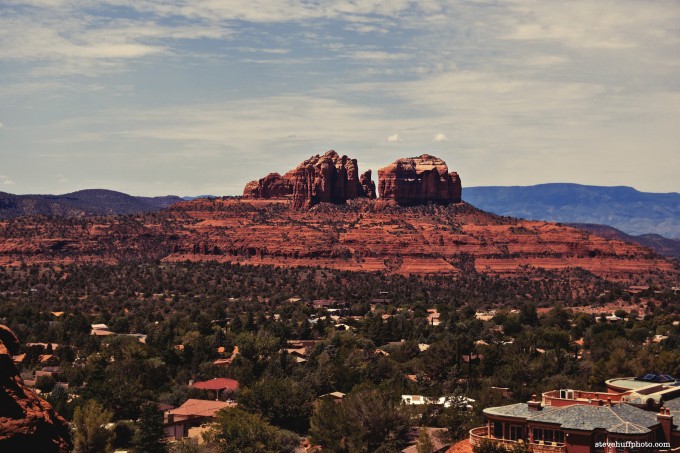
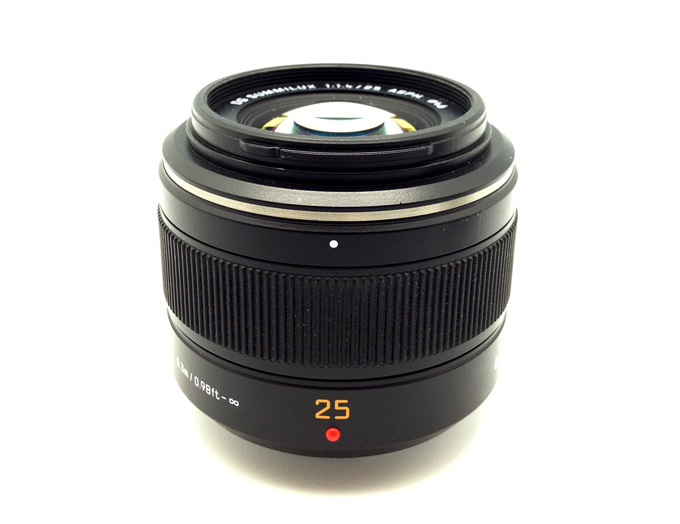
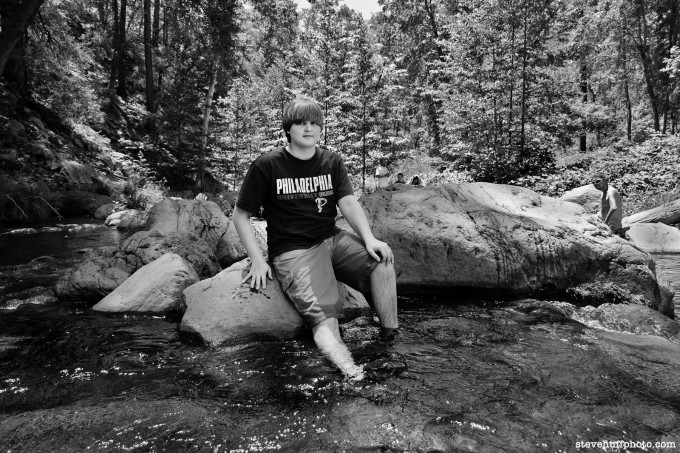
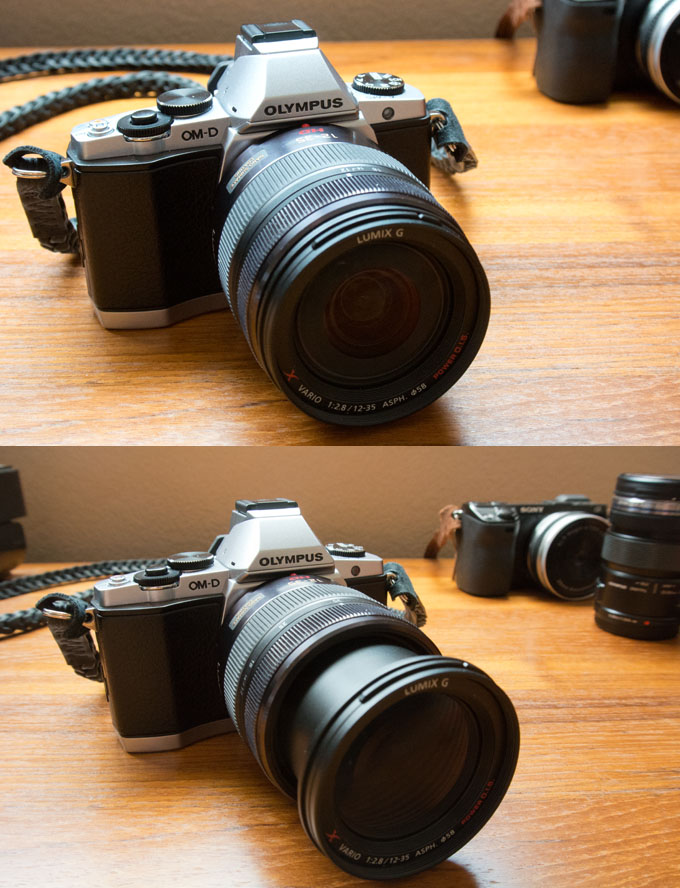
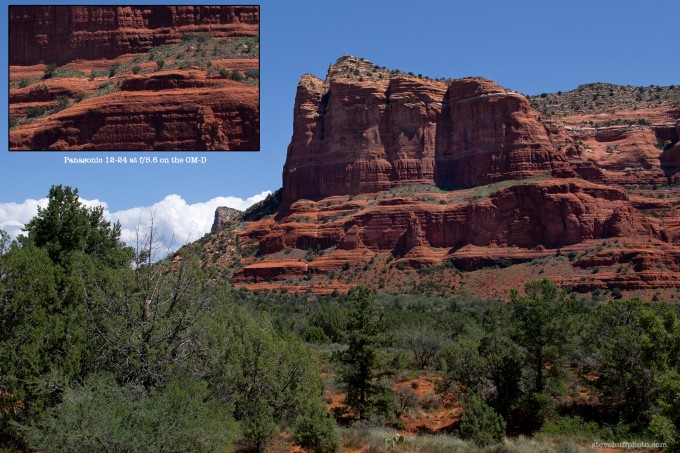
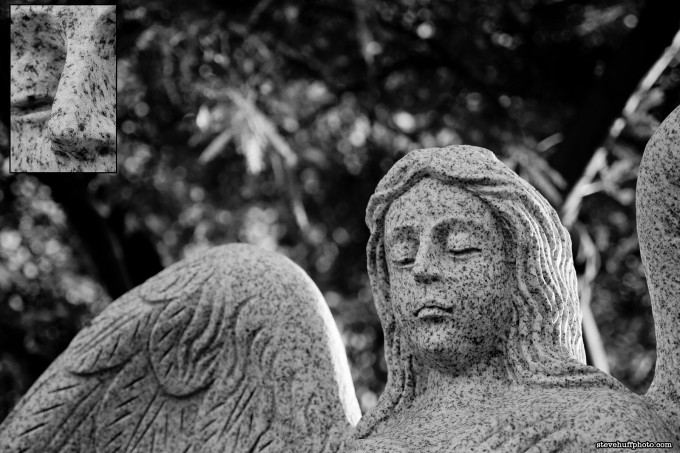
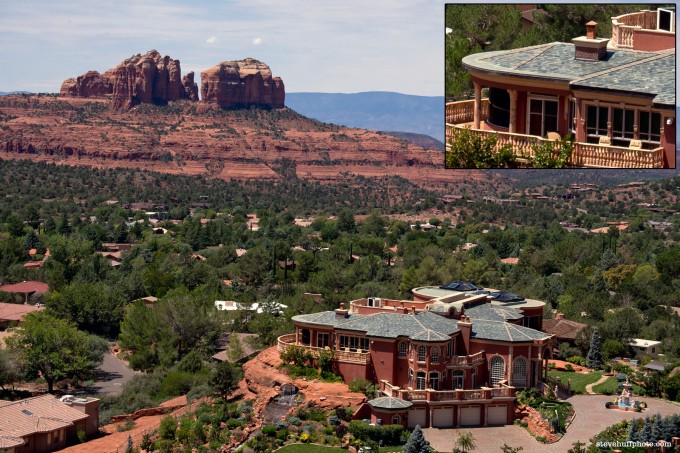
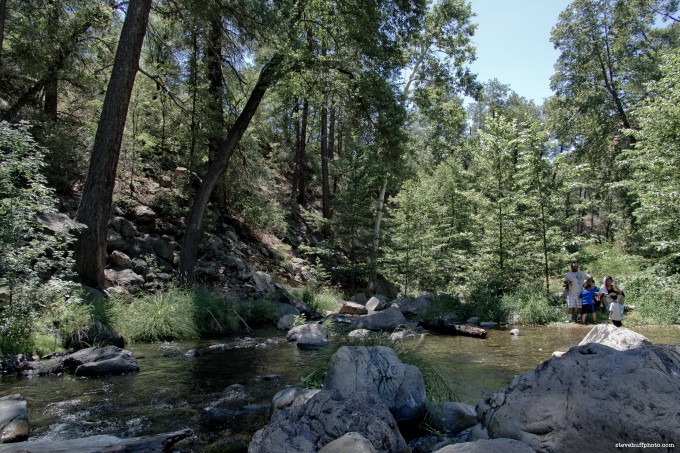
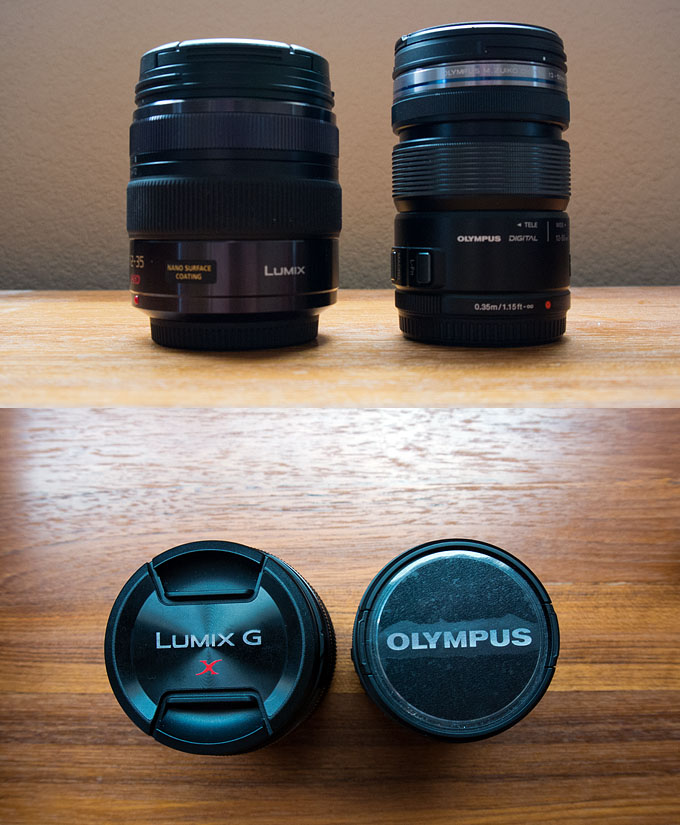
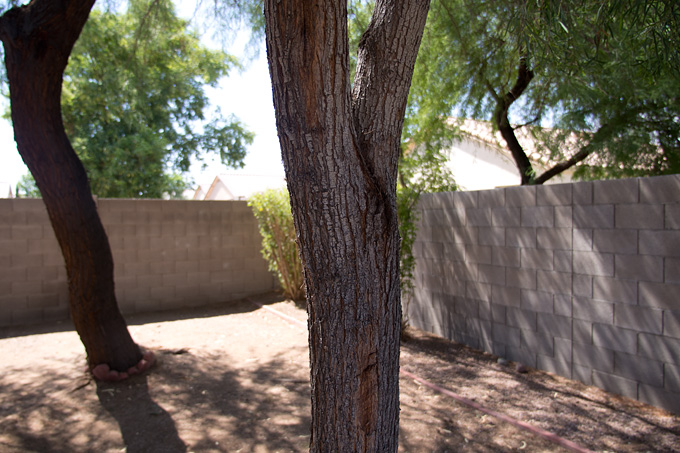
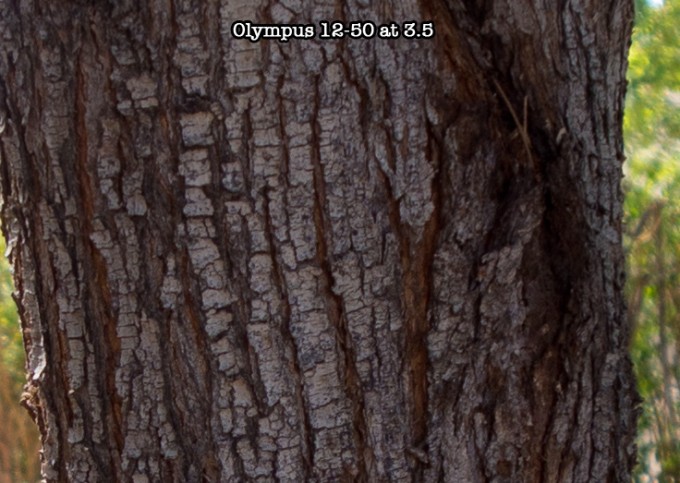
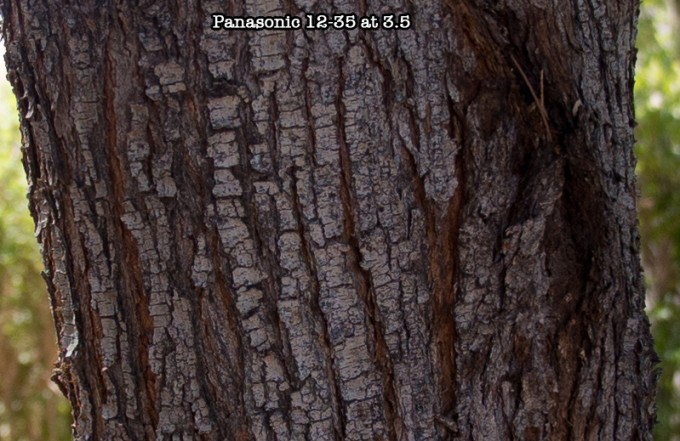
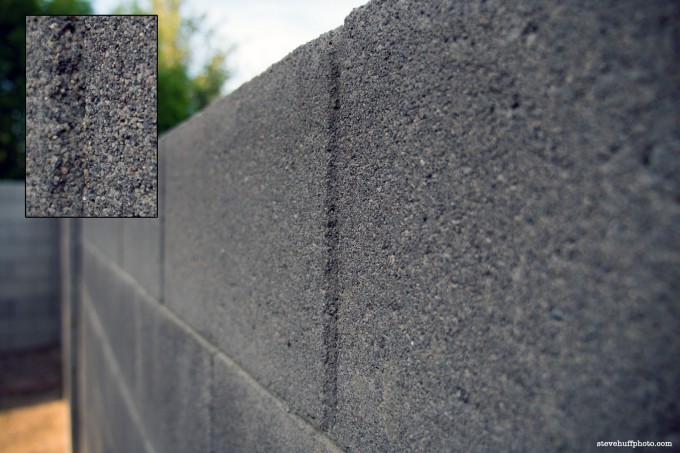
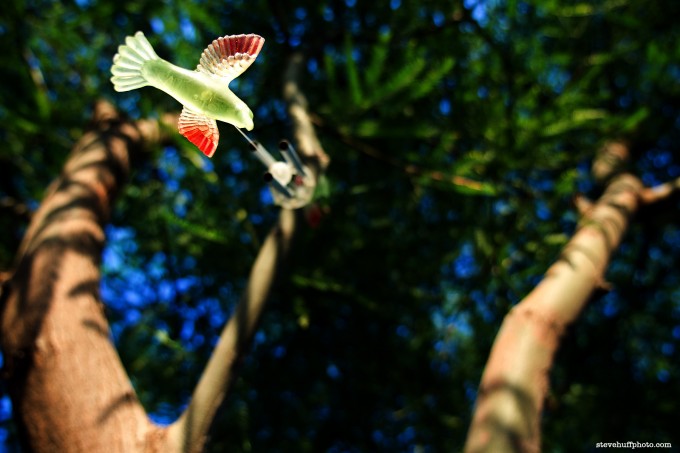
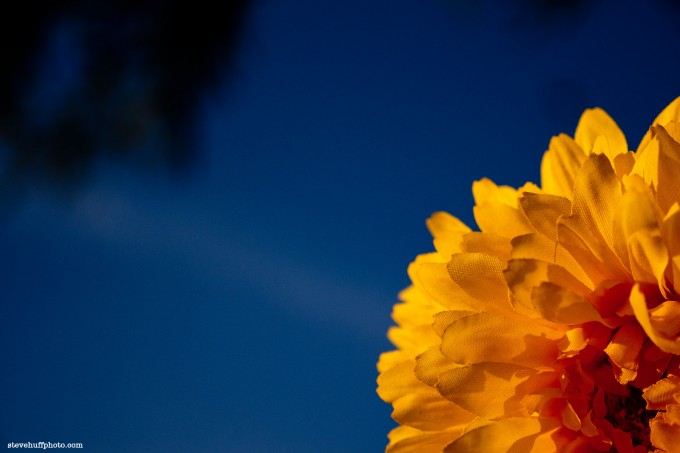
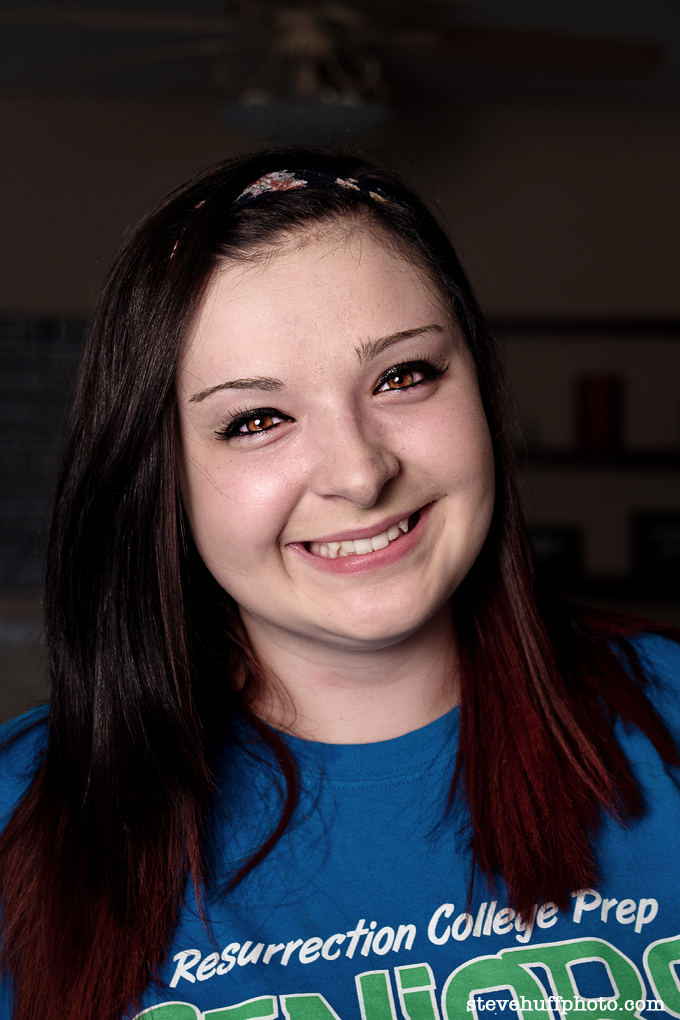



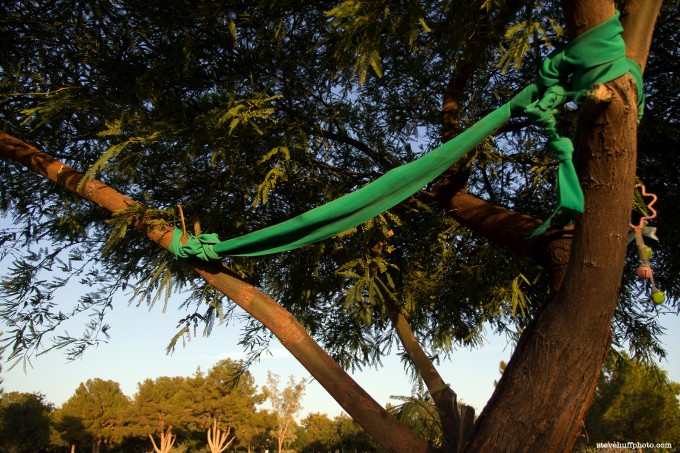
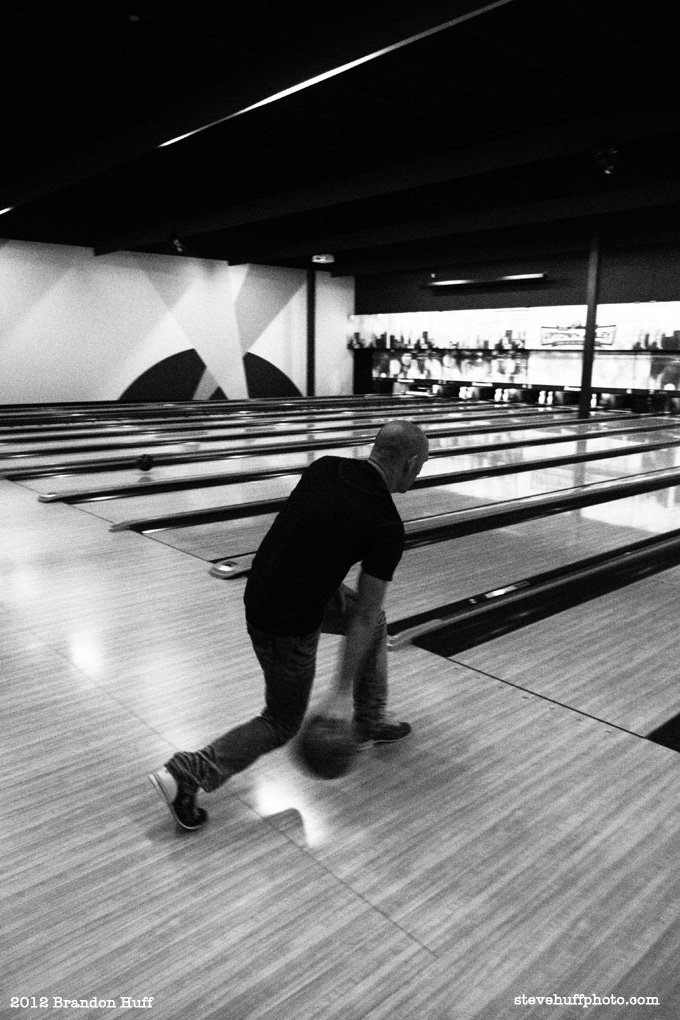


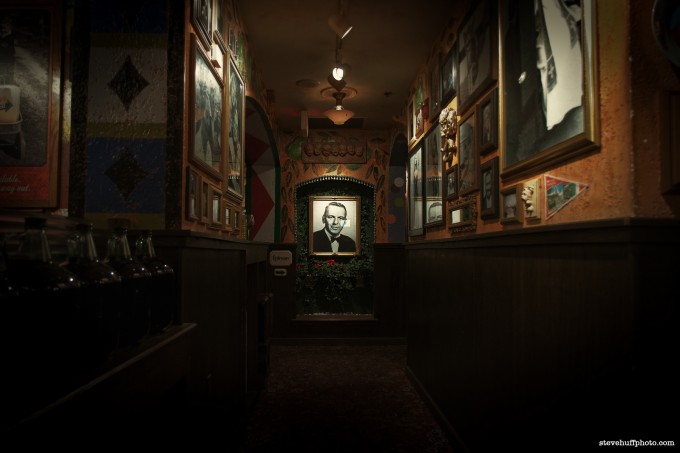
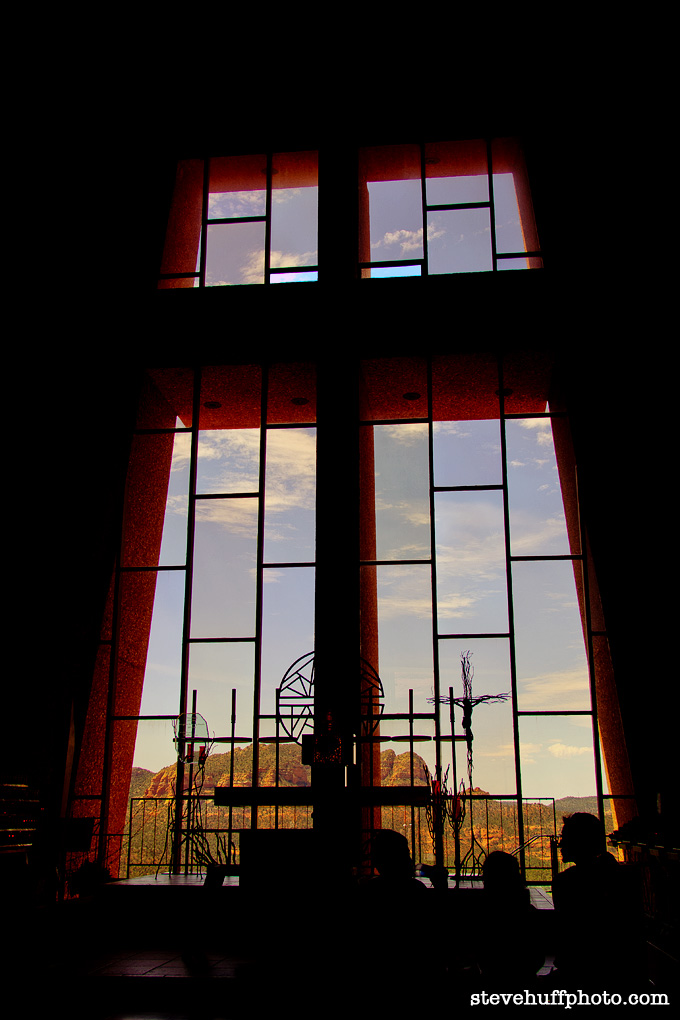
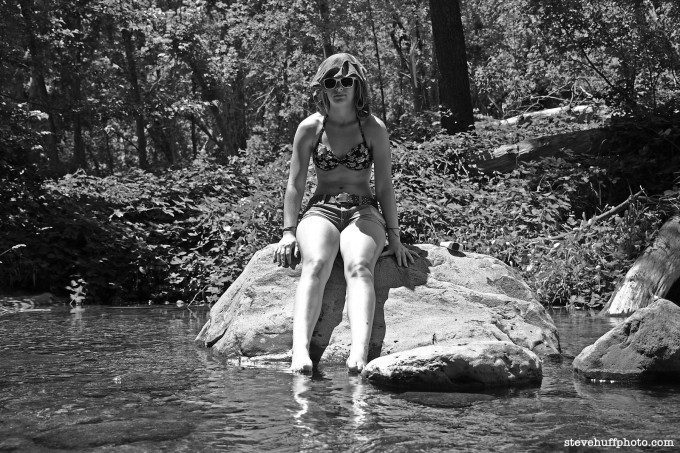

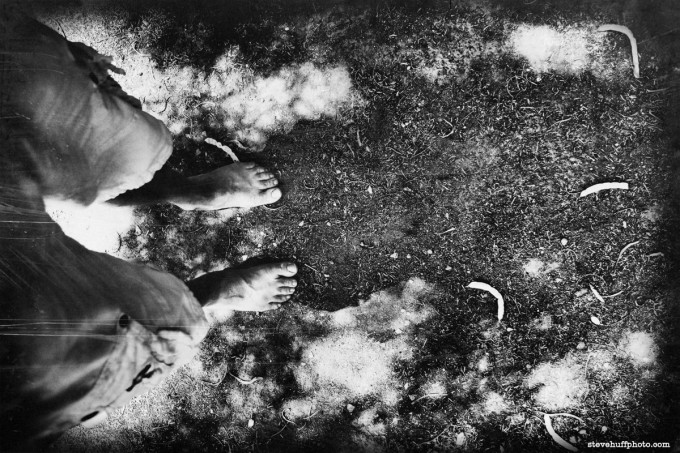

Hey Steve, would you take this lens or the Olympus 12-40 to use on an em5ii? Im guessing one couldn’t really go wrong with either choice but was just wondering which you think has the edge 🙂
Sorry I just noticed the question has been asked here already but add any extra thoughts if you like. I noticed this lens is now in a mark 2 version?
Honestly I think the Panasonic has the IQ edge over the Olympus on this one.
The discontinued Panasonic 14-45 3.5-5.6 kit lens is considerably sharper throughout the range than the Panasonic 12-35 2.8, crazy cheap used to buy, same magnification, much more useful telephoto reach (45 verses 35), lighter and more compact, and also has OIS (see and compare the surprising Ephotozine lens sharpness test charts on these two zooms throughout the aperture range). All I lose with the kit lens is some aperture speed which is less important with OIS, no weatherproofing, and a slightly less wide (14 verses 12), and I’m very happy with the IQ of this lens. What I gain is at least $500 change in my pocket to purchase other lenses. You should test one.
I used the lens you speak of, and it is not close to the 12-35 for color, speed, etc. There is so much more to quality than sharpness.
Hi Steve, if you have to choose between Panasonic 12-35 2.8 or olympus 12-40 2.8, what would be your choice ?
Both are fantastic. In my experience, I enjoyed the IQ of the Panasonic a tad more but the build of the Olympus.
Hi, I am late to the party. Steve you may want to sort so the most recent posts are at the top. I liked your review. I think you focused too much on the price. When the lens first comes out it is always high and then adjusts to the market. Currently available for under $900 new and less for used. Would that have changed your review? Thanks
Steve,
Thanks for your review, I always enjoy them. I am considering getting this lens, but I am also considering getting the Fuji XE-2 with the 18-50 f2.8 to f4 for only $200 more than current price of the Panny lens and get a Fuji body to play with. I know the Fuji is slower and not as wide, but I really would like to hear your thoughts on this comparison.
Just bought it!!! Great lens on OMD…..
Here’s my dilemma … if you’re hiking down the Kaibob trail in the Grand Canyon, with the intention of serious photography, and don’t want to be compositionally limited, what kit do you take? Full frame with holy trinity lenses? Pretty heavy. APS-C with lighter weight kit zooms (12-24mm, and 18-55/55-200 combo or 18-200mm)? More feasible, but still kind of heavy and bulky on your back. m43 with primes? Seems like you won’t be able to fully explore all the compositional possibilities with only prime lenses. The trail is a steep switchback so you can’t just walk closer or farther away at your choosing.
So that gets you to something like this, m43 with 2 or 3 zooms, and a serious photographer might appreciate a higher quality zoom such as this one. As for me, I’m stuck. I use APS-C DSLR with cheap zooms now. Can’t decide, do I go up to full frame and holy trinity for the highest quality, across to mirrorless APS-C, or down (by “down” I’m referring only to sensor size, not IQ) to m43 or possibly even the Nikon 1. Any decision involves spending quite a bit of money on new lenses, so I just stick with what I’m using. Actually, for this scenario the Nikon 1 is as tempting as anything, the lenses are very small, and more affordable than this expensive lens.
I know this is an old thread, but here we are mid-way through 2013 and the GX1 is available for next to nothing. Will that work will with this lens? Still learning about MFT…
Trying to jump from Panny Fz200 and Nikon D600 kit to MFT. GX1 might be the right starting point as I’m awaiting the EM5 update…
Comment above “I am thinking perhaps it’s time to let the D800 and all those lenses go.” You need not let all the lenses go. For one thing there are m43 adapters which look quite useful with long lenses. Your 200mm F4 Nikon is in effect a 400mm on an m43 body. Get a Metabones “speed booster” and it can also be a 280mm equivalent at F 2.8! That also works with wide lenses so if you have 14 2.8 you get in effect a 20mm F2.0. If you have the 14-28 2.8 zoom, I am jealous.
Hi Steve,
Maybe you can look at the F2.8 35-100mm from Panasonic too. I bought this lens and use it on an GH-2 body and the results are sprankling bright. I do not see any disortions and the colors are pure.
Cost was 1135€ A beautiful addition to my F4-5.6 100-300mm from Panasonic.
I was looking at the F2.8 12-35 mm and found big simularities both are GX lenses and of high quality. I was not so impressed with the standard 14-42mm kitzoom.
I love my OM-D and 25mm 1.4. But I can’t agree with your statement that the 12-35mm stands “toe-to-toe” with the Nikon and Canon 24-70mm lenses. There’s no way you’re going to match the quality of the bokeh in the Nikon and Canon lenses with the Panasonic 12-35mm. The f/2.8 is effectively f/5.6 on MFT cameras. Don’t get me wrong, I love the sharpness of the 12-35. And I may end up buying it for my OM-D. But the bokeh is nicer on the Nikon and Canon lenses.
Great reviews, vids, etc. Say, I have a Panasonic GH3 and the Pan 14-35 2.8 in my Amazon shopping cart (linked off your site). Wanted to know if you use a filter (protective) on your lenses. If so, what would you recommend for this 14-35?
i just hate that in camera sharpning all the shots looks oversharpened id rather want the glas to be good.
Did someone compare the 12-35 and the 25 mm in low light conditions ? I already have the 12-35 and I hesitate to buy the 25 mm specially for indoor low light or the 20mm to have a compact lens
Thank you for your opinion
The 25 1.4 would win in low light. I have had both here and the 12-35 is nice but the fact is 2.8 is much slower than 1.4 when you are dealing with low light. The 20 is a good choice for this due to the tiny size and cheaper cost.
Wow! With that price tag, I’d rather buy another OMD body, mount a 12mm on one and a 25mm or 45mm on the other since I already have all the primes. Then I have a “zoom” system with super fast speed lenses. =)
On the OM-D the 12-35mm is just a terrific lens for photojournalistic type use. The iQ is terrific – right up there with the Panasonic/Leica 25mm f1.8 (which I use if for low light). While somewhat large, the OM-D with the 12-35mm still fits in a large coat pocket for Portland’s rainy days so it is small enough for me. For birds, wildlife, or distant people, I use the 100-300mm. For ultra wide, I use the 9-18mm. All are good. If I were starting over with the OM-D, I would get this lens first instead of the 12-50mm kit lens to obtain even better IQ and wider aperture. Like the 25mm f1.4, I REALLY LIKE the images produced by the 12-35mm f2.8.
Steve, I am on a fence about this lens. it is in my cart in B&H and has been for a few days. My concern is the size. I already have Canon 5DM3 and Nikon DSLRs, and these gets lot of use (especially 5DM3) these days. The reason i got Olympus OM-D was for a small portable light camera that does terrific shots. The only lenses I have for it are 45mm 1.8, 12-50 and 40-150. I love the combo with 45mm 1.8 because it is light and small and feels great and takes amazing portrait shots. I fine 12-50 too large on my OM-D, it is already not that comfortable to me, the balance is not there, and I refuse to buy a grip because that would defeat the purpose – I already have several large DSLRS and I don’t need another one. I am in a different boat from people for who it is the only camera, or people that only shoot with m43. So my concern is the size and weight of 12-35. It looks large on your OM-D, and I don’t know how it feels on it, but if it is anything like 12-50 or worse, I’ll pass. Although I would love a comfort of a zoom, when I go out with my wife to clubs and dark restaurants and I want to take shots in dim light of my wife and her girlfriends, often group shots in a dark, 12-50 won’t cut it. So I thought this 12-35 would be ideal. But the price is high and based on your pictures it is large and heavy. I could buy Panasonic 14/2.5, and Panasonic 25 1/4 instead, save 50% of the price…. but then I will keep changing lenses….
So the bottom line, I want to hear more thoughts on the weight/size ration with OM-D…. can you or someone else comment?
I’m not Steve, but you asked “..can you or someone else comment?” ..so here are my comments:
(1) This 12-35mm is a Panasonic lens ..it fits on both Panny and Olympus m4/3 cameras, but Pannys don’t have image stabilisation in the camera bodies, so they have stabilisation built into the lenses ..which makes this lens much thicker – and heavier – than similar Olympus lenses. So you’re right when you say “..It looks large on your OM-D” and “..based on your pictures it is large and heavy” ..you’re right; it is!
You say “..and I don’t know how it feels on it..” and – in my opinion – it’s rather heavy and unwieldy (I’ve used it, so that’s not just a guess.)
(2) You say “..I want to take shots in dim light of my wife and her girlfriends, often group shots in a dark, 12-50 won’t cut it.”
The Oly 12-50mm lens has a maximum aperture of f3.5 at its wide 12mm end. This Panny 12-35mm lens has a max aperture of f2.8 ..there’s only about half-a-stop difference between f3.5 and f2.8. So this 12-35mm lets in only a teeny weeny bit more light than the Oly 12-50mm, when used at its widest angle (12mm). I’d say that’s not enough difference to bother about.
You don’t say whether you mean that the “12-50 won’t cut it” because of its f3.5 aperture, or because 12mm isn’t wide enough for these shots (equivalent to 24mm on your full-frame Canon 5DMkII). If your pics are too dark, or blurred, you could try a higher ISO of course – which is cheaper and simpler than buying another lens (..but you already seem to have ‘Gear Acquisition Syndrome’). Pics shot at ISO 12800 on the OM-D aren’t too bad (and it does go up to ISO 25600, though those are generally rather ‘noisy’).
It looks like the small and light Olympus 12mm f2 might suit you: http://tinyurl.com/cc98pt6 ..but it’s not a zoom, and you seem to prefer not to “..keep changing lenses”. Don’t bother with this 12-35mm Panny; buy – if you have to keep buying things – the Oly 12mm f2 instead. Not as much to twiddle with as a zoom has, but small, light, and with a good wide maximum aperture.
Here’s a link to Steve’s own low-light shots with this lens: http://tinyurl.com/3bf83wl
Hi Steve
Would you rather use the P12-35 with an e-p3 or instead use the om-d with the 12-50 kit lens?
I ask as i have an e-p3, and really like the idea of a quality standard zoom, but not sure if I would be better served just upgrading to the om-d instead. In terms of cost both options work out about the same if I were to sell the e-p3 to get the om-d.
Thanks and keep the good work up.
Matthew
Have you tried shooting video with this at max aperture? I’ve read reports elsewhere that it seems the aperture adjustment as you zoom from one end to the other is not constant, i.e. not keeping the constant f/2.8 as you zoom? Read more here… http://forums.dpreview.com/forums/read.asp?forum=1041&message=42389352 – any comment?
Steve,
Do you RAW process with Lightroom or the native Olympus software? I’ve noticed a huge quality decrease in the final output when using Lightroom.
Slightly off topic, but I see that you have attached the Barton strap to the OM-D using round split rings.
I find the triangular ones that come with the OM-D to be rather uncomfortable.
Were they uncomfortable to you too, and are the round ones any better?
Right now I’m using a home made 3/8 inch nylon webbing strap with attached directly to the camera’s lugs (no rings). It is light and very comfortable, no rings to get in the way, but I worry that the strings will eventually fray and part.
I never ever use triangle rings. They are horrible. I always take them off when they come on a camera.
Did you do any PP sharpening on the eyes in your portraits? Especially the first B&W conversion. The eyes look like they are made of clay.
Thanks for the great review. I own an ep2, gh2 and most good m43 lenses: 25 1.4, 45 1.8, 14mm. But I recently acquired the 12-35 and the 45-175x models and now I can pack really light. My 45-175 has absolutely no problems like I have seen online and I got it for $100 cheaper at B&H by buying the silver one ( which is really not that silver, goes fine with gh2). It’s remarkable how tiny my setup is now, especially for travel and I don’t feel like I am sacrificing too much quality.
I also recently got the 12-35 (in addition to also owning some primes).
Personally I own some other systems where I use primes (M9 for example).
So the OMD for me is the camera I take when I want fast AF, flexibility and/or weather resistance.
I now take this camera when I used Nikon in earlier times (I know the C-AF of the OMD doesnt work well, but the S_AF is so good that it can sometimes replace C-AF).
The Kit zooms I allways found pretty slow.
Thus the 12-35 seems to fit the bill pretty well for my application.
Hello Steve,
I’m a Japanese fan subscribing from over the Pacific. I’m a big fan of Olympus (and Leica) and I have bought OM-D. OM-D and this lens are the one of the best match for the system better than 12-50mm. 12-35mm gives more sharper and (as for me) rich color.
Recently the stores have discounted this lens from 89,800 JPY (this was an average price in Japan) to 79,800 JPY, which is almost $1,000 so I traded 12-50mm in then bought 12-35mm.
In Japan, so many hobbyists think Panasonic lens and cameras are always to be discounted in the few months (we, of course, don’t know exactly when) and this time, seems like now is “when.”
> this lens can stand toe to toe with the Nikon and Canon 24-70 equivalents while being MUCH smaller
It is MUCH smaller b/c it is an equivalent of a full frame 24-70 **f/5.6** lens, NOT f/2.8.
For a m4/3 lens to be equivalent to Canon/Nikon 24-70 f/2.8 it would have had to be a 12-35 **f/1.4** lens. And that would have been massively bigger and heavier than the reviewed 12-35 f/2.8 lens. Example : Olympus 14-35 f/2 lens, an 28-70 f/4 equivalent, which is heavier, larger and more expensive than even a more versatile Canon’s 24-105 f/4 lens.
That does not sound entirely correct to me.
Just made at test at ISO 100 with a 50mm f/1.4 on my J1 (with the FT1 adapter) and my D800 pointing to the same target and set to f/1.4.
The shutter reading was the same on the two cameras with the same aperture even though the J1 has a crop factor of 2.7. So the light transmission for this lens is the same for the two cameras.
I also tried setting the kit lens to about 18mm which corresponds to around 50mm and the aperture to f/5.6 – again same shutter reading on my D800 at f/5.6 on the 50mm.
Sorry, maybe you were thinking about the ability to create unsharp backgrounds?
Hey Anders, your “experiment” was correct. However, the lenses that you placed on your camera were not “photographically” equivalent. Let me explain using your 18mm Nikon 1 and 50mm Nikon FX lenses as an example (the explanation is a bit long, but bear with me :-)) :
1) depth of field.
Given the same image framing these lenses at f/5.6 will have different depth of field on their respective cameras. They will achieve the same depth of field when set to f/(5.6/2.7)=f/2.1 (18mm lens on Nikon 1) and f/5.6 (50mm lens on D800). Images produced at these settings are equivalent in terms of depth of field.
2) image noise.
Set to f/5.6 both 18mm Nikon 1 lens and 50mm D800 lens will obviously produce identically exposed images given the same ISO and shutter speed (just like you reported above), let’s say 1/100 sec, ISO 800. Clearly the D800 image will be have less noise than the one from Nikon 1. However if you set both lenses to their “photographically” equivalent apertures: f/2.1 for 18mm Nikon 1 lens and f/5.6 for 50mm D800 lens and set both cameras to the same shutter speed 1/100 sec then D800 will still require ISO 800 to correctly expose the image, while Nikon 1 — ISO 100 (since f/2.1 is about 3-stop faster than f/5.6 on D800). In this case the images taken by Nikon 1 and D800 will have essentially the same level of noise (of course when you view them at the same linear size). They are then equivalent in terms of noise. You can either test that by yourself or just compare the noise measurements in DxOmark database ( http://goo.gl/v2qzz => “Measurements” => “SNR 18%”). There is a good scientific explanation why this happens (see for example http://en.wikipedia.org/wiki/Image_sensor_format#Shot_noise ).
All in all 18 mm f/2.1 lens on Nikon 1 has the same a) angle of view, b) depth of field, and c) final image noise for a given scene at a given shutter speed as 50mm f/5.6 lens on Nikon D800. Therefore it makes sense to call say that 18mm f/2.1 on Nikon 1 is “photographically” equivalent to 50mm f/5.6 on D800, NOT to 50mm f/2.1 which will have only the same angle of view, but shallower depth of field and will result in much lower image noise given the same shutter speed.
Do you have any questions? 🙂
p.s. Your 18mm kit lens start only at f/3.5, which is equivalent to f/3.5*2.7=f/9.5 on D800. You could compare the equivalence in terms of DoF and noise by say setting 18mm to f/4, 50mm to f/11, Nikon1 to ISO100, D800 to ISO800. For the same scene you’ll get approximately the same shutter readings on both cameras and the same level of noise when you compare the resulting images at the same size (e.g. just upsize your Nikon1 10MP image to 36MP of D800).
An f/2.8 lens is an f/2.8 lens is an f/2.8 lens at all times and no matter what camera its on. In terms of light transmission to the sensor the Panasonic 12-35mm f/2.8 is exactly equivalent to a Canon/Nikon 24-70mm f/2.8.
The difference is in Depth of Field – so the Pana f/2.8 on an M4/3 camera renders DOF equivalent to f/5.6 in full frame terms; and thus can’t compete in creating unsharp backgrounds. This is not an artifact of the lens but rather of the 2x crop factor applying to M4/3 size sensors relative to full-frame.
Darryl nicely illustrates what it takes to get true f/2.8 DOF with a full frame DSLR.
Nice to have that clarified – thanks.
Note also that DOF control can work both ways: medium format shooters regularly have to stop way down to F8-11 etc to get a model’s entire face in focus. Macro and supermacro shooters regularly stop way down into diffraction limited territory just to get an entire insect head or flower stamen in focus. Its a lot easier to do macro with a compact 1/1.7″ sensor.
Every point on the sensor size continuum from compact to 4/3″ to APS-C to 135 to medium format to view camera represents a compromise. If dmojavensis was preaching from the Hasselblad pulpit he could equally disdain the poor DOF control of 135 cameras.
There are a number of ways to get more out of focus backgrounds. Larger sensors. Wider apertures. And longer focal lengths. From a practical DOF control standpoint m4/3 forces portraiture to larger focal lengths, which makes the new 75mm the ideal portrait lens (not the 45mm).
Just be prepared to stand further back.
Hey Darryl, completely agree. Medium format cameras certainly provide potentially larger control over the depth of field than 135 format or smaller sensor/film cameras for lenses with the same angle of view and F-number. However, while f/1.4 and even f/1.2 lenses are widely available in various focal lengths for 135 format film/sensors, the brightest primes on for instance Hassy catalogue currently are 80mm f/2.8 and 100mm f/2.2 which are equivalent to 50 f/1.8 and 64 f/1.4 on a 135-format camera. Using a 50mm f/1.2 on say a Canon 5D you’ll get more than a stop of extra DoF control. You’ll gather more light too.
Anyway, too shalow depth of field is never a problem as you can essentially always stop a lens down to and below the diffraction limited aperture (which by the way also is determined solely by the equivalent F-number :)).
Thanks Darryl.
I had never thought about the *plus* side to 4/3 sensor DOF. Of course, there are many times when one wants plenty of sharpness but there is this constant obsession with shallow DOF for some reason. All I would add is that the last remaining trick in obtaining shallow DOF (given that aperture and focal length have been utilized) is to simply get closer to the subject; bearing in mind that the chosen focal length may add some mild distortion to the image up close. And, where possible, chose the background carefully.
Hey Graham, can you explain how that is an advantage when you can simply stop a larger format lens to an equivalent F-number and get exactly the same image? E.g. stop 24-70 f/2.8 down to f/5.6 on a FF camera to get the equivalent of m4/3 12-35 f/2.8.
dmojavensis,
You don’t have to stop down to get the DOF you need on mu43. A 45mm 1.8 (equiv 90mm) can be shot wide open and render the entire face in focus and blow out the entire background. The DOF may not be equal to a 1.8 in full frame terms, but its light transmission is. In being able to do this you are allowed to use a higher shutter speed or lower ISO numbers compared to a larger format that must ‘stop down’ in order to get control of DOF.
Hi David,
That is a common misconception. In reality if you use the same shutter speed and set lenses to achieve the same depth of field correctly exposed images will have essentially same amount of noise irrespective of sensor size (for sensors of roughly the same generation). Imagine you take a photo with 1/100 sec., ISO100 with 45mm lens set to f/1.8 on a m4/3 camera. You will achieve the same DoF on a full frame with 90mm lens, f/3.6(=1.8*2), 1/100 sec., ISO400 (to compensate for 2 stops smaller F-number). ISO400 on a full frame camera and ISO100 on a m4/3 are essentially the same in terms of noise for sensors of the same generation. More generallyl FF cameras have a 2-stop image noise advantage over m4/3.
All in all 45mm f/1.8 on a m4/3 camera is equivalent to 90mm f/3.6 on a full-frame in terms of both DoF and the noise in a properly exposed image taken with the same shutter speed (give or take 0.5EV due to particular sensor implementations). There is a good fundamental reason for that, but I don’t want to go into the details now.
Thanks for the reply, however I am not seeing the fundamental difference you are explaining. To my eye, not a software analysis tool, noise differences do not become apparent until high ISO’s are used between mu43 and full frame.
I did a quick comparison of an E-M5 vs 5D Mark III and it holds its own until we begin to get into high ISO’s. The full frames in my opinion only hold a 2 stop advantage when you surpass a certain ISO.
http://www.dpreview.com/reviews/studiocomparefullscreen.asp#baseDir=%2Freviews_data&cameraDataSubdir=boxshot&indexFileName=boxshotindex.xml&presetsFileName=boxshotpresets.xml&showDescriptions=false&headerTitle=Studio%20scene&headerSubTitle=Standard%20studio%20scene%20comparison&masterCamera=canon_eos5dmkiii&masterSample=5d3_5202.acr&slotsCount=4&slot0Camera=canon_eos5dmkiii&slot0Sample=5d3_5202.acr&slot0DisableCameraSelection=true&slot0DisableSampleSelection=true&slot0LinkWithMaster=true&slot1Camera=oly_em5&slot1Sample=p1010003.acr&x=-0.2103270223752151&y=-1.1765218794499912
Hi David,
true, lower ISOs are visually equally “good enough” at low pixel count on all modern cameras, m4/3 and above. Though if there is no visual difference between say ISO400 on a full-frame and ISO100 on m4/3 then there’s no disadvantage to using f/3.6 vs f/1.8 to get the same DoF :).
Measurable difference is of course there at all ISOs, as illustrated by for instance DxOmark measurements. The reason behind it is that the noise is already present in the light that you capture to create an image and that noise depends solely on how much of it you capture. A smaller sensor => a smaller physical aperture at the same F-number and angle of view => less light => more noise. You can check out the Wikipedia article on image sensor format if you want to know more about it.
Cheers!
That’s correct, but see my reply to Anders above.
I have been using the 12-35mm for a little while now and fully agree with everything Steve says about it. I think we are now only talking about fine, fine, differences between this zoom and some of the better prime’s available for m4/3, or any camera system. Even against my Pana 25mm Summilux this lens delivers for outright image quality. Besides the sharpness, which Steve stresses many times, he doesn’t really describe the beautiful tonal rendering of the lens. So not only is it sharp, but the transitions of tone and colour both on the global level, and the micro level, are a joy, not in the least bit harsh and almost 3D in character. I can’t wait for the 35-100mm later in the year.
the 12-35 was on my buy list but then the rumour of an Oly 12-60 floated about (Photokina) and the Panasonic was put on hold. Besides, I’m still waiting on my 75 (but I did get my OMD batteries)
I’m not claiming that the 12-35 makes m4/3 the equal of APS-C or FF (there are 1 and 2 stop advantages in high-ISO noise and depth-of-field control for the larger formats, respectively). But I thought the following comparison was interesting in terms of the kind of compromise m4/3 now provides:
Micro 4/3 format
E-M5 + Panasonic 12-35mm F2.8
425 g + 305 g = 730 g (1.61 lbs)
$999 + $1299 = $2298
vs.
DX / APS-C format
D7000 + AF-S Nikkor 17-55mm F2.8
690 g + 755 g = 1445 g (3.19 lbs)
$1097 + $1419 = $2516 (street)
vs.
FX / 135 FF format
D800 + AF-S Nikkor 24-70mm F2.8
900 g + 900 g = 1800 g (3.97 lbs)
$2999 + $1889 = $4888 (street)
And here is a visual comparison of the three formats from camerasize.com: j.mp/RIQfUq
Compared to APS-C the E-M5/12-35 combo comes in at half the weight / volume, with a 1-stop sacrifice in high-ISO and DOF-control, but 90% of the price. Once production can keep up with demand we’ll probably see typical discounting and high-end m4/3 systems like the E-M5/12-35 coming in at 75% of the APS-C format.
Loved your review, followed your Amazon link and I love the lens! The micro-contrast is amazing for a zoom of this range and the constant f2.8 is very nice. Unlike some others I am happy that Panasonic made the speed compromise to keep this lens a manageable size – f2.0 would have been an unwieldy monster!
Happy to support your site – keep up the good work!
Thanks!!!
That seems to be one stunning lens. Using two systems for the moment, Panasonic GX1 and Nikon D700. On my upcoming travel I have decided (I have tried before with no luck…) to finally leave the D700 at home and go for the smaller and lighter gear. I do miss a standard lens and been looking at the Olympus 12-50 but after reading this I have to save up a bit more (quite a bit) and get this one it seems. Great review, thanks a lot.
“I can see Nikon and Canon charging obscene prices for their pro 24-70 lenses but Panasonic for Micro 4/3?”
So are you’re saying that $1399 is overpriced because this is made by Panasonic and for a Micro 4/3 as if it’s an inferior format?
A zoom of this quality is going to carry a high price tag. Would you have an issue with the price if the lens had a red dot on it?
I would say the Nikon 24-70 is a pro grade lens which is very well built and has very good optical quality, so the price is not high for such a lens in my opinion.
For a professional it is really next to no money for such a lens which is built for extensive use and will last for many years, but for most other people it is pricey, but still worth it for use on a D700, D3, D800, D4 in my opinion.
“Which is very well built and has very good optical quality”
So it is the 12-35mm.
“So the price is not high for such a lens in my opinion.”
So why the Panasonic has to have a lesser price?
Perhaps if Panasonic had painted the zoom bright white?
😉
Steve, this is an extremely helpful review. Currently I have two Panasonic bodies, but if I invest in this lens it’s good to know that it will deliver on an Olympus also. Further to that, thanks for your CA comments in the discussion section; this gives a balanced point of view on an issue that seems to come up regularly – people say it’s a big concern but you have put this to rest for me.
By the way, to be clear on mirrorless history – sorry if I misunderstood, but your article seems to hint that this started with E-P1 and GF1. This distinction clearly belongs to the EVF-equipped G1 which came out in mid-2008 and was a really great starting point for a new kind of camera system. The great video-equipped GH2 followed in early 2009, and the E-P1 / GF1 cameras not until mid-2009. As you noted, Olympus has come on really strong lately with super-impressive cameras and lenses for Micro 4/3, but it took a while for them to get off their heels after Panasonic surprised them and everyone else with the Micro version of this format.
Thanks!
Launched in autumn 2008, the G1 was indeed the 1st m4/3 camera and it took only still pics. Six months later Pana launched the GH1 which added video and a different kit lens better suited to movie-making. The GH2 appeared 1.5 year later (sept 2010) and was the 1st m4/3 to sport a 16 Megapixels sensor which Olympus took 18 months to add to its own high-end model (E-M5). But, according to some sources, it might have been made by Sony rather than by Panasonic.
OM-D sensor is not made by Panasonic and is better than what is in the Panasonic. It is the 1st m4/3 sensor that goes toe to toe with the big guys.
Hi Steve,
I always read your reviews and this one with particular interest as I would love to put the 12-35mm with my new OM-D (purchased body only as this lens not yet available in Australia). It is either this lens or an Olympus 12mm with a Panasonic Leica 25mm f/1.4 and I have been weighing up the size issue against the convenience of ‘one stop shopping’. I’m not likely to be a semi-pro so I think the 12-35mm has it after your review. Like many people I think most of my pics will be taken on this focal range BUT I would love something that is a great prime lens with great bokeh capabilities. I could get something in the tele range like the Oly 45mm f/1.8 or the new Oly 75mm though not right now as I think the Panasonic 35-100mm may be the most generally useful and first to be purchased. Assuming I have both the new zooms I wonder what then may be best to achieve nice bokeh? How does the 12-35mm compare to the Panasonic Leica 25 f/1.4 in terms of IQ (not a lot in your review about that). Any thoughts for a poor soul?
More strength to you
Graham
Steve, can you post some “different” samples? samples that are a bit more normal and not just the ultra close up shots of abstract objects you like to do. Say for example, a group shot of few of your kids from head to waist at a typical 6-10 feet shooting distance, and see how it compares to a 24-70 on a full frame body. I’m curious to see if the 12-35 can provide decent subject isolation for normal people shots.
It will look exactly as 24-70 f/5.6 lens on a full frame (or as 15-44 f/3.5 APS-C lens) in DOF department.
God, Panasonic and Olympus are one or two more big fat zoom lens away to coming full circle back to dslr’s. At the rate they are going, it won’t be far until even their own fans see the folly of it all. I always felt that Olympuc could have made digital pens using their porro mirror technology they had way back when. The electronic viewfinders are not a propper substitute for optical viewfinders. And now with bigger and bigger lenses, a 200 or 300 2.8 is surely along the way. This kind of lens clearly illustrates to me why Canon or Nikon is not willing to create a system to match their dslr’s. This CSc system is always one or two big lens away from dslr-land.
It’s not clear in pictures, but those big, fat zooms are tiny compared to dslr zooms. And light. An OM-D might look like a dslr (too much to my mind), but it is still tiny in comparison. If you want a small, simple mirrorless camera, there are plenty of models made just for you, and a nice collection of compact high quality primes. OK, you can’t have an OVF. A bit odd complaining that mirrorless cameras are getting too much like dslrs then grumbling they don’t have OVFs, the biggest differentiator between the two categories. EVF technology continues to improve and in a few years many of these cameras will have OLED EVFs that make the NEX-7 EVF look low-res and noisy.
I was refering to 200mm and 300 mm and 80-200 2.8 lenses. You can make a camera the size of a pack of matches, the lenses aint gonna be the same. Look at the 43 lenses, they weren’t small. as for evf’s they get noisy with or without oled, esp indoors. Evf’s are noisy, have refresh rate problems, black out…3 strikes. Im not so optimistic as you are and if the day comes when these problems can be resolved, then I’ll be on board full steam ahead, but for now, the only benefit of these CSc cameras is the small bodies…but wait till that 300mm 2.8 comes.
still prefer Prime lens
Hi Steve,
Thanks for the review.
Just to be pedantic: You said “this lens can throw out the background if you zoom out to 35 (70mm equivalent) and keep the lens wide open.”
I think you mean ZOOM IN.
Apart from that which tele zoom would best be paired with this?
40-150mm? ie which is the best tele?
This 12-35 seems impressive but the lens looks a bit large with the tiny body. Probably better with the grip (at least the side part).
I can’t speak to “what’s the best”, but I have the OLY 40-150, and it’s an amazingly good lens, especially considering the price ($199).
Not very fast, but for outdoor use that’s never been a problem.
It’s also quite small and light.
The upcoming Panasonic 35-100 2.8 would be the best match 🙂
Should we be expecting a review soon? This pair of zooms has me intrigued. They cover all the focal range I use quite neatly. OK, maybe add on a super wide angle of some sort, just for fun. For travel and everyday use I don’t want to be messing with my lenses all the time. I could fall in love with this easily, but not until the price drops.
Speaking of love, was that mention of your soon-to-be stepdaughter a sly wedding announcement? Or have I just not been paying attention? In any case, congratulations to both of you, and your new family. You’ll be a splendid stepfather–the girl’s already making faces at you. At that age they practice rolling their eyes while applying lipstick and pouting as they curl their eyelashes.
I know you lean towards Oly, but was wondering if you had any Panasonic bodies you could put it on to give us a shot or two. I have a G3 and might move up to a G5 once their prices have dropped in a few months, as Panasonics always see to. Or just can that plan, buy an RX100 and hold the G3 and its current lenses for now. That damn Sony is messing with me so bad. Good thing I’m on a limited income or I’d have one of everything
Thanks for a great review.
Living in dusty and wet/humid Asia I am one of those guys you mention that doesnt want to change lenses all the time & needs the weather sealing.
You say, however, that purple fringing is minimal or non-existent but many of the images with this lens shot on my Oly EM5 have pronounced CA. Other Oly body users also complain about this….though Panasonic bodies correct this automatically in camera.
LR 4.1 makes it easy to get rid of…. but is your copy of this lens unique in this regard?
Hi Steve
Does it make sense to get the 12-35mm for E-PL1? I have been using E-PL1 with kit lens after reading your review some time ago, and now Sigma 19mm F2.8. Not sure to upgrade body or invest in a quality zoom.
Well..tough call. My son owns the E-PL1 and it is capable of great results but the E-M5 is leagues better. But what is better? E-PL1 with 12-35 or E-M5 with kit? Tough call and I guess depends on needs/wants.
thanks for reply!
really enjoy reading the crazy comparison you have done (on top of great reviews and daily inspiration) and surprises derived from some.
hopefully you have time to compare “old body new high end lens” or vice versa. might be interesting and helpful for many to decide the next lens/body.
Hey Steve!
Love the review. I’ve just purchased an X100 and now I’m saving for the OMD and some good glass. I was going to buy the kit with the weatherproof 12-50 but I wasn’t so impressed with the speed performance at the long end. The Panasonic 12-35mm seems to address that problem. It will make the OMD my ultimate island travel camera.
Now, my questions for you Steve:
Why are you no longer using the optional grip on the OMD? And does it affect the balance when using such a beast of a lens (12-35mm)?
I’m assuming you changed from the black to the silver unit cos all the Olympus primes are silver only.
I love my “old” D700. It’s just a little bit larger, and has got amazing image quality with the benefit of a shallower depth of field. All 4/3 pics look cropped by comparison (I know a Pen E-P2 and an E-5). Beyond this, Nikon cameras provide results without banding, whereas all Olympus cameras have banding issues.
Are you talking about banding in the sky?
In the sky, yes, even at base ISO. And everywhere at higher ISOs. Banding made me sell my E-5 DSLR (which I otherwise loved so much!), as the files don’t provide the capability to convert them to fine art monochromes – because of the banding issue.
The Canon G1X is even worse in terms of banding. Also sold.
Cameras with which I have experiences, that provide very high quality files for monochrome conversions are: Nikon D700, D300(s) (yes, the good ol’ D300 series is VERY GOOD!), Leica M8, M9, and (and that’s why they are so expensive) the Leica X1 and X2. What is so great about these guys? Well, their “grain” stays homogeneously distributed even at high and highest ISOs, without developing any substructure or pattern (called banding). Especially the Leicas are dream machines when it comes to monochrome conversions. I wouldn’t wonder when Leica would tell us that they build their digital cameras with classical monochrome photography in mind.
Yeah banding is my biggest problem with digital photography. I actually have dealt with it using the M8. The Nex7 was particularly prone to it. So far the X Pro 1 seems to handle sky gradation pretty well but it seems like you need a full frame camera to make sure you will not encounter it.
I really enjoy my Oly 12-50 kit zoom – except for the total lack of speed. If the Panasonic had the same focal length range I think it could be worth the high price to me, but I use 35mm and up quite often, so the Olympus is just more versatile for me. And at night primes are much faster, so … It’s kind of a shame that this is the only reasonably fast zoom lens for MFT, with all the others being extremely slow. I think I’m better off supplementing my 12-50 with the Panaleica 25.
I guess being a Panasonic and all, the zoom is electronic only? I really hate that mode on my 12-50 and even wish I could disable it; I prefer the classic rotating zoom by far (even if it feels like rubbing on sand with this lens).
BTW how exactly does a constant aperture work? F-Stops are focal length divided by aperture diameter, so … if the F-stop always stays the same, does this mean the aperture diameter changes? The longer the focal length, the more the aperture opens up (in terms of diameter)? At 35mm and f/2.8, the diameter should be 12.5mm. If the aperture can open this wide, why not do that at 12mm, too? That’d be f/0.95! I know this calculation is wrong (otherwise the lens would be like this); I’d be glad if someone could tell me why!
“..If the aperture can open this wide, why not do that at 12mm, too?..”
Too many aberrations wide open at 12mm ..it’s not corrected for that. And the lens would need to be larger (wider at the front) and therefore heavier.
Normally (..on most zooms..) the effective aperture drops as you zoom to a longer focal length ..partly because of the increased distance between glass elements, and partly – as you say – because the increased focal length renders a constant physical diameter as a smaller f-stop.
So in this 12-35mm, the physical aperture is reduced at the shortest focal length (12mm), so that the constant f-stop can be retained throughout the zoom by automatically opening the physical aperture slightly (like the Panny 7-14mm zoom) ..which is great for video: no juddering aperture.
All this is more feasible and cheaper with the small m4/3 lenses than with bigger, heavier (Canon, Nikon) full-frame lenses.
Thanks for the explanation!
This lens introduced me into the m4/3 world. I have Fuji X Pro 1 with all three lenses and saw myself swapping a lot. I was interested in Olympus OMD because of many rave reviews about how IQ is decent, fast AF, and having varieties of superb lenses to choose from. Since I didn’t like to swap a lot, I was looking at the zooms and I found that Panasonic released this gem couple months ago in Japan/Asia. I have this lens and OMD for couple weeks now and I can say the IQ is acceptable (I knew it couldn’t reach Fuji X Pro 1’s IQ), but the handling, fast AF, the ability to customize buttons to your liking, no need to turn on “macro mode” (not that there is one on OMD) to actually focus very close, no switching lenses, the image stabilizer helping me get more in-focus shots, etc. makes this combo a joy to use. I personally do wish it was f/2.0, so it could blur out a busier background, but one could work around it and find a simpler background and then the bokeh would look smooth and non-distracting. F/2.8 and the camera’s IS is just about enough to allow me to hand hold in low light situations (any darker situation would probably require flash or tripod). I’m planning to get the RRS grip+plate or the battery grip for better handling. My Fuji’s been sitting on my table these days and I only use it when I shoot portrait or need to take shallow DOF pictures.
Just a reminder that Fuji is coming out with zooms for the XP1, one of which will be released at Photokina (18-55mm 2.8-4). In case you haven’t seen it here is a roadmap for current and future Fuji lenses.
http://www.fujixseries.com/discussion/933/fujifilm-x-mount-lens-road-map-2012-2013/p1
Happy Shooting
The price will prevent me from adding this to my arsenal (at present PL 25 & 7-14) for some while. It’s worth noting that Amazon.co.jp has 12-35s for ¥ 72,621 = US$ 925, after VAT tax, so I imagine a few will make it in through unauthorized imports.
Steve,
Great review as always. Leaves me tempted to look for the 12-35 sometime in 2013.
As my go to cameras are my EM5 and my D4 I thought I might make a comment.
The Nikon 50 f/1.4G is not a speed demon in the AF department. Try the Nikon 24-70 for some pro speed and responsive AF. Yes, the D4 is a load to carry but it is super fast and responsive, has killer IQ, can shoot at insane ISO, and has a buffer that is a mile deep, unlike the shamefully tiny EM5 buffer.
For pro sports or very challenging lighting I find the D4 to be unmatched. For almost everything else, the EM5 is excellent. The EM5 files are also very robust for PP although the D4 files are even more so.
As an aside, between the EM5 and the D4 I have found little use for my M9 of late. I am selling it shortly and suspect I will find the M10 to be too dear. If that is the case, I’ll keep a couple of lenses for my film Leica’s and sell the rest off. Making large prints from m4/3 has just gotten so easy …
Best,
Bill
Fashion Meets Fighting
http://www.hatakeyamagallery.com/april-2012-bill-fulcher/
Personally I paid my 12-35 $ 990 in a small shop $ 1,290 is a introductory price 😉
I paid nothing, I stole it from the Panasonic stand.
Guess it boils down to how you like to work. If you’re the type who goes out with a single focal length and looks for pictures that fit that, then you’ll be happier with the primes. They’re certainly lighter and smaller. If you want everything in one package, you’ll prefer the zoom.
Given the terrific high-ISO performance of the OMD, I don’t think there’s really any need for a faster zoom than the 12-35, and the one extra stop of the primes isn’t a huge advantage.
Unless you have money to burn, I don’t think it makes a lot of sense to own this (very expensive) lens AND a full set of primes.
On the other hand, I wish the 12-35 was just a little bit longer. At 70mm equivalent, it’s a little short for my taste for portraits. Close up, it will make noses a little more prominent than I like.
An OMD with this zoom, plus the 45mm, could be all you need.
Good report Steve. I would like to describe another option on camera choices. Just my opinion.
Ignoring cost for the moment, for landscapes or other things that do not move there are no better options than a Leica M9 and a full frame DSLR. I have shot both side by side along with a Panasonic GH1 and Leica wins when a Leica or Zeiss lens can capture the shot simply because the detail noticeably surpasses any other system. I learned that initially on this site and thank you for that insight. A full frame Canon body like the new 5D III is a better camera than the M9 but no lens in Canon’s array of really good lenses can match the detail of a Leica or Zeiss lens. That is why I have come to the conclusion that lenses are the basis of any camera system. No camera is better than the image delivered by the lens. Garbage in, garbage out. But the range of Leica and Zeiss lenses for the M9 are limited. For fisheye or long telephoto a DSLR is needed. The GH1 is a good camera but enlarged it simply lacks the detail the Leica and Canon can deliver.
For candid shots of people or moving things, fast focus and often rapid fire is needed and a DSLR is way ahead of any EVF camera in that regard. I generally like the GH1, especially the face recognition focus, but for shooting kids jumping on a trampoline or running around nothing is better than looking through an optical viewfinder and firing off several shots per second. I have tried several small cameras and all that rely on EVF are just too slow to focus and shoot to get the primo shot (I haven’t tried the new Olympus and maybe it is an exception). Too often I see the shot I want when the kid is way up in the air with an ecstatic smile only to see the kid all the way down to the ground and looking away when the camera finally fired. Actually the Leica M9 would be much better for that purpose if the kids are on a trampoline and not moving in and out of focus because it fires the instant you press the shutter.
At other times, kids and pets react badly to having a big camera pointed at them and being able to use the articulating screen on the GH1 solves that problem. Put the camera in your lap and no one notices that you are firing away. Shooting down low also provides a different perspective on kids that reveals more of the person than the child. I have kept the GH1 for that reason alone.
The option I am considering now is to replace the GH1 with a Canon Rebel t4i. The Rebel has an articulating screen, live view, good but not great ISO performance, an optical viewfinder if you want to go that way and overall all the advantages of both a DSLR and the GH1. Plus it can use Canon’s best lenses. The only downside is the size. The Rebel is a little larger than the GH1 with a zoom lens but not much. A micro 4/3 with anything but a pancake lens doesn’t fit in a pocket, nor does a NEX with a zoom. The new Canon 24-70 II lens will be smaller than the Mark I version. Ultimately I think the Rebel with a 24-70 would be only slightly less convenient to carry around than a micro 4/3 with a comparable lens.
The improved micro 4/3 lenses you describe in this article are tempting. Another reason I have soured on the smaller cameras is the generally poorer quality of the lenses overall. A Sony NEX 7 has a great sensor but suffers from the slow to shoot and garbage in problems. The Canon G1 X has a great lens and probably the best sensor of a pocketable camera but is also slow to shoot.
Always a trade off. But for these reasons, I disagree that DSLRs will disappear in five years. Micro 4/3 is still a long, long way from equalling the versatility and capability of a DSLR but it is interesting to see that the lenses are improving.
I am not sure how you can come to that conclusion when you have not tried the best micro 4/3 cameras. The GH1 is from 2009. There have been many improvements since then. Olympus OMD series and the Panasonic GX7. You also don’t acknowledge the advantages of the EVF over an optical viewfinder. You get to see a much better representation of exactly how the picture with come out before you shoot (with adjustments). Also you see your results immediately in the viewfinder without having to pull the camera away and look at the LCD. I have a G5 and find the EVF so sharp sometimes I think I am looking thru an optical viewfinder. For most people there is no reason to have carry around the big and heavy DSLRs from Nikon and Canon.
Steve, 2 questions for you on this:
1) How does the 14-42mm lens stack up to both the 12-50mm and 12-35mm lens? I bought an e-pl2 kit with the zoom lens, but my Pana 20mm 1.7 is always on. I would like the convenience of a zoom from time to time, though. Thoughts?
2) How does the OM-D stack up to the new Sony SLT’s? I really like the EVF, but am again thinking smaller is better, as smaller means I’m more likely to bring it with me.
Thanks!
Steve,
Thanks for the informative review. I think I will end picking this lens up for a weather-sealed kit with the OM-D. I wish you had the grip on there, would have been interesting to hear your thoughts on how the grip helped with handling on this large lens. I think for most daily activities I could leave the 14 and 25 at home and just roll with the 12-35 judging by your IQ here. Won’t be ditching any primes for it as I still prefer those.
The grip is a great addition to the OM-D and it really makes carrying the camera easier, regardless of the attached lens. To me it’s worth the investment and I also use it with the 12-35mm f/2.8 lens. Just get one, you will not regret it.
I just got the 25mm 1.4 and loving it (latest shots here http://500px.com/cksample and here http://www.flickr.com/photos/cksample3/ taken with it), BUT it really kills me that the range of it (though not the speed) is covered by this lens that is weatherproofed to match my OM-D. Should I sell my kit weatherproofed lens + the 25mm and grab this lens and the Oly 75mm when it comes out and call it a day? What do you think, Steve?
I’m portrait and street shooter and the weatherproofing is a really nice plus for crawling the streets of NYC.
I’m not Steve but I’ve been considering the same question. How much does the wider aperture matter to you? If you almost always find yourself stopping down, you may not miss the prime all that much. The IQ of the zoom looks really good, even wide open. I know I’d be happier with the zoom, but I tend to shoot deep dof shots anyway. If shallow dof means a lot to you then the prime makes more sense. I’m sure the zoom won’t actually equal the IQ of that superb prime, but I’m pretty sure it will be good enough I won’t feel I should have used another lens. Combining this zoom with the longer tele primes is an attractive possibility, though I’m waiting for reviews of the other Panasonic zooms in this range.
Yeah, Mark, you and I are thinking similarly. Although the more I shoot with this 25 f1.4 the more I love it. I just wish it were weatherproofed. I think ultimately I’m going to end up eventually getting this zoom, keeping the 25 f1.4 and getting the 75mm. Especially if at 12mm this zoom is as good as the Oly 12mm, as Steve indicates.
I love my 12-35! It’s has been a great lens for the little time I’ve had it. Just came back from shooting at night with it. I’m just beginning to learn my OM-D though, so I feel there is a lot to learn about this little camera but this lens (although expensive) can indeed be the only lens you need. (not to offend the primes guys here)
nice review Steve. m4/3 is a good system isn’t it. at least 4 quality primes, and now a very good f2.8 zoom. much easier to travel with m4/3 than a dSLR system. the 12-35 was £999 when launched in the UK. I’ve seen it for £899 and currently Panasonic have a £50 cash back offer.
Great images Steve. The price does seem pretty high but since I’ve never bought a high quality zoom that may be normal for all I know.
I was wondering if you are shooting with your M9 at all lately. Do you not miss any image quality when shooting with m4/3 compared to the Leica?
Also I was wondering if you planned on reviewing the new fuji lenses once they are released later this year. I know you don’t have the camera anymore but maybe they would send you one for the review.
Thanks!
I will review the new Fuji stuff. Haven’t been shooting the M lately due to having to review so many other things. I admit though I do like the closer focusing range of the micro 4/3 cameras and lenses and I am really only missing the super shallow DOF effect that comes with Leica. In just about every other area, the M4/3 E-M5 holds up well.
Hi John. Just a quick word to tell you that you got some very interesting photos on your website.
Well done. Nice compositions and nice post processing and who gives a sh*t about the camera or the lense used.
Keep up the good work.
Thank you Kais! Really appreciate you taking the time to look at my work, glad you dig it. I do prefer M mount and now Fuji lenses but you are correct when you say it does not matter. Whatever works right?
Great review Steve. I love my primes, especially the Panasonic 25mm, but there are times when a zoom is a convenient option to have. This is a tempting lens to buy, especially after reading your review. With Olympus rounding out their list of primes with the recent 75mm, will they turn their attention to building some nice fixed aperture zooms for Micro 4/3? I can’t help but wonder, or really dream I guess, that they can or will build a 12-35mm and 35-100mm f2??? Would the size, weight and/or price be too much for Micro 4/3? At f2 I think I could deal with all three of those things.
How’s the color accuracy straight out of camera on omd, are these mainly raw shots converted
Thanks for the review. This lens looks big! Why do my OM-D shots (12-50mm) posted to Facebook tend to be better liked than my Canon 5D3 (24-105mm) shots? Color? Depth of field? Better composition? Who knows, but one thing is for sure, the OM-D can produce some very appealing images. Your casual comments about the Nikon D4 helped tamp down my secret lust for it (couldn’t carry both a D4 and my 3 yr. old grand daughter anyway). Really like the OM-D with small zooms and primes. I do feel that the flash systems of Nikon and new Canon system are better for fill and bounce.
Nice lens, if not a bit expensive and relatively large, though of course the same could be said for a DSLR 24-70 equiv f2.8 zoom as well.
For me though, its not so much an issue of the cost or size/weight, but more to what I’d want my m4/3 system to be.
Do I want to create a minaturized version of my full frame Nikon DSLR with with rather than the 14-24/24-70/70-200 I’d carry a OM-D with 7-14, 12-35 f2.8 and perhaps the yet to come out 35-200 f2.8 zooms ?
Nothing wrong with that and of course plenty of versatility, great IQ etc, basically its exactly like a DSLR kit, only smaller
On the other hand, would I want to keep my m4/3 kit as small and light as possible. would want to keep the overall concept and shooting style closer to a RF system with a couple of compact prime lenses.
Now both the 12-35 and Olympus primes are good, but for many, myself included, I shoot rather differently when I’m out with a DSLR and zooms, which I do for work, and something like a RF style camera and 2 or 3 prime lenses with me.
Just a different way of working with a 12mm and 45mm as your only options vs a fast wide range zoom. Not better or worse but just makes you think and look for things to shoot a bit differently.
For me, I find a couple of primes more enjoyable, faster, easier to carry and while they limit me a bit, when I do make them work, the images are usually outstanding with the best IQ, bokeh etc possible in the format.
Nice to have so many choices to what a m4/3 system can be these days
And to me that’s exactly the beauty of the Olympus OM-D camera system. You need just one camera because you can configure it to what you need it to be at any time. Remove the grip and attach a small prime for a compact, unobtrusive and lightweight high quality camera. Attach the grip and a f/2.8 zoom lens and you have a super versatile high quality camera. And in both cases, this camera is smaller and lighter then any APSC or full frame camera system. I totally understand why micro 4/3 and the OM-D in particular is gaining popularity fast.
And that’s just why I like the Olympus OM-D so much. You can configure it to be just what you need it to be. It’s such a smart Japanse design. Attach a small high quality prime and you have a compact, lightweight and unobtrusive camera with a lens that has the desired focal length. Attach one or both parts of the grip and a good quality zoom like the Panasonic 12-35mm f/2.8 and you have a more versatile system that can do almost anything. Even in this configuration, the camera system is a whole lot smaller and lighter then most APSC and full frame SLR’s. You can also mix and match camera parts and lenses.
Steve, did you not find bad CA with this lens? That and the size would be my main criticism. I know it can be fixed in Lightroom or avoided with penny bodies, but it is an irritation.
Hi Steve,
is it just me, or is there heavy CA in the picture “fullsizeoak.jpg”? Especially the boy at the right side and the leaves in bright sunlight. IQ wise, the image looks horrible.
There is some CA, there is CA in every digital lens made it is just some cameras correct for it. The OM-D does NOT correct for Panasonics CA but if shot on a Panasonic body it will. This lens has much less CA than most $5000 and up Leica lenses and IMO is only noticeable to pixel peepers. This would not even be noticeable in a print or resized shot and lets face it, who shares full size 100% files online? No one, unless they are for review or scrutinizing. The CA on this lens did not negatively effect any shot I took posted here. Yes, you can see it in the full size shot but like I said, wouldn’t show up in a print and if the image was resized to flickr standards (which is what mostly everyone does anyway) it’s no big deal. I have yet to see a lens on digital that does not have CA. They all do.
You really have to go up to 200% to see that, and all modern image-editing software will correct it,
often as a preset that works automatically.
In an 8×10 print, it would be hard to see even if you didn’t correct it.
Not a problem.
What about OOC CA? I read that it was bas when the 12-35/2.8 was attached to an Oly cam
What you see is what you get.
Steve,
Can you comment on the AF speed and accuracy of this lens on the OM-D?
How does it compare to the 12-50mm Olympus kit lens?
Thanks!
AF Speed, to me, seems on par with the 12, 45, etc. No issues. Accuracy was spot on every time so never missed focus like the NEX cameras do quite often.
Got my 12-35 two days ago, and so far it looks very promising. Color, contrast and sharpness justify the price compared to other lenses. Also, I find the 24-70 equivalent very useful. My GX1 + 12-35 weighs in at about 1/3 of my Nikon D700 + 24-70, and that also helps a lot. I’ve noticed on Flickr that lots of OM-D owners are using the 12-35 with great results, so it seems like a good match. My gear pusher got the silver OM-D on the shelf today, and I must say I was tempted – it’s a great looking camera. However, rumors say that there will be a new OM-D announced at Photokina, so I might just give it a month or so and see what happens there. One comment I’d like to make, is that I find the discussions around the M4/3 depth of field issues somewhat tiring. The format is what it is with it’s pros and cons – if it’s not what people want, then by something else. It really is that simple.
There may be a new PEN announcement at Photokina but not an OM-D 🙂
OK, if there’s not another OM-D I’m afraid I’ll have to by the existing one 🙂 The Pens I’ve seen so far haven’t quite been to my taste, I’m afraid. And I don’t suppose a GX2 is realistic this time around either?
*…have to buy…
Thanks Steve! I have the Panasonic/Leica 50mm prime and yes, it is incredible! But I also use the slow kit zoom with great results. So, just not sure I will spring for the f/2.8 zoom but it is great to see this wonderful new glass being produced for micro 4/3.
Love the shot of the angel statue!
Tom
Hi Steve! I’ve had an Olympus 75mm on pre-order for months now, just like everyone else, and it seems like it’s never going to come. This Panasonic is available for sale right now and the way you review it, I’m considering ditching my preorder on the 75mm and getting the Panasonic instead. I know they’re two very different lenses, but I think I would be happy with either. Do you have any thoughts on that? Currently I only have the Panasonic 20mm and the Rokinon 7.5mm, so I just need something fast that with a long focal length to compliment them, and I need it within 2.5 weeks.
Well the 75 is a 100% different lens than the 12-35. The 12-35 is a general purpose ever day lens. The 75 is more of a long (150mm equiv) DOF monster. All depends on what you want to shoot. The zoom would get more use I would think.
Hmm actually with the current lens rebates I could upgrade from my E-P3 to an OM-D and buy the 45mm 1.8 for almost the same price as the Panasonic lens and have an extra camera body. Decisions decisions…
Do the upgrade. OM-D is the bees knees.
The OM-D E-M5 is far and away my top pick of best camera release of 2012. So far.
So far? What do you know that we don’t!? (grin)
I own both, wait for the 75mm if you want a “wow” lens.
On the one hand Steve has a point that the 12-35 might get more use, but I think you’re right, my primary desire is for a “wow” lens. I hope they ship that thing soon.
Oh dear. If your prime desire is wow lens, get Zuiko 14-35/2 and 35-100/2. NOW THAT`S WOW.
Yep they most certainly are (if used on 4/3 body) otherwise they are compromised as is well known on u43.
Now if only Panna didn’t have to include OIS into their lenses they could cut the cost and bring 12-35 into the market at a sensible price.
“Yep they most certainly are (if used on 4/3 body) otherwise they are compromised as is well known on u43.”
Sir, what do you mean by “compromised”? I want the Zuiko 12-35/2.0 on the OMD that’s why I’m asking.
Thank you.
I just got this wow lens,..from 17street photo
Probably this is the Sharpest Lens on M43 right now,.or even,sharper than any Nikon / zeiss i ever use,.color, contrast, sharpness is the best i ever seen in any of my lens,.i really so Lucky ,i can have it a week ago,.
http://www.facebook.com/photo.php?fbid=397634140286035&set=a.322634361119347.68627.100001183560523&type=1&theater
Hey Steve, nice post. If it’s not a secret to tell, what presets are you using in Exposure 4? Favorite color film? Many thanks.
Well, I think 3 of the images here used Alien Skin but I just went through until I found the look I liked. Generally I like the Provia or Astia film preset but I also like some of the others in the Polaroid section (much improved over Alien Skin 3) and some of the vintage selections.
One thing you might consider is to add comments in Lightroom to keep track of which Alien Skin settings you used (that’s what I do).
I’ve been taking my OM-D EM-5 to weddings recently (I’m a full time pro wedding photographer) and have really been taken with it. I’ve been using it as my “amazing stealth camera” during receptions with the Oly 45mm f/1.8. Flip out the screen and hold the camera at waist level and the folks who would otherwise cheese it up don’t give you a second look. Great for candids!
Since my big Nikons are more than a little intimidating, I’ve been seriously considering replacing them with a pair of EM-5s, but finding the right lenses has been the big hold-up. The Panny 12-35mm would be a fantastic standard zoom, with the upcoming 35-100 the second of three. I’m very happy to hear that the lens doesn’t disappoint.
Still, I agree with you about the price. There is a perception that a pro should always have the newest and best, but every purchase is a business decision and would need to return the investment many times over. I can’t help but wander what will be available in the next six months at a price that makes better business sense. It’s late in the season, I can afford to wait a few months. But… the Panny is REALLY tempting!
Hi Patrick,
I’m kind of in the same boat as you and this lens may push me over the edge to buy it plus the OM-D. I’m a pro newspaper shooter but have been looking for something smaller/lighter that. An actually handle the terrible light and situations I face daily. Knowin you are usin the OM-D for some of your work is encouraging. do you have a link to some of your OM-D shots?
Thanks,
Craig
Hi Craig,
I haven’t put too many EM-5 shots up yet as I’m still mostly testing it on the wedding day as an extra camera. But I did post a blog about it , including a number of photos, as it relates to the camera’s stealth capabilities at a reception.
http://popephotography.wordpress.com/2012/07/10/my-amazing-stealth-camera/
All the shots posted are natural light with the 45mm f/1.8 – which is an absolute gem of a combo. Most are at ISO 1600 or 3200 as the venue was quite dark, and I found the IQ to be far better than any camera with with that sized sensor has any right to be!
I’ve found the camera’s biggest strength to be the EVF which really helps with backlit situations (I can dial up the EV comp just right). On the other hand, its biggest weakness is continuous focusing which isn’t terrible, but it’s not terribly reliable either.
I would say that the camera is very good as a documentary tool. A big bonus is the fact that it’s far less intimidating than the big systems.
I’m thinking the same. I’ve fallen in love with the Micro4/3 format and my OMD. I am thinking perhaps it’s time to let the D800 and all those lenses go. My body can take the carrying of all the gear like it use to.
I spent all day yesterday out and about with just the EM-5 and a couple small lenses instead of my D700 and comparable – but larger – lenses. Quite refreshing.
“There is a perception that a pro should always have the newest and best”
Who’s perception is that? Maybe yours but the perception of my clients and the one that I share is that the photograph is what counts not the gear. I’ve shot covers with the Pen Mini and with the OM-D, never had a complaint about the files.
The argument that pros need a certain level of gear to be considered competent is so passe. Be judged by your work not whats in your bag.
I agree with your assessment, but I’m afraid that (at least in my area) there is a perception that one must use the newest, latest gear or they’re not really professional. I sincerely wish that that wasn’t the case, but in the REAL world of wedding photography those hiring your services aren’t as nuanced in photography and don’t make complete judgement based solely on your work.
At a bridal show just this last weekend a couple stood in my booth, looked at my prints, looked through my sample albums, then went on to ask if I used Nikon or Canon, and was it pro level gear? As though their opinion of the finished work that they just examined was on hold until they were sure I qualified as a real professional.
The argument may be passe. It may not be a perception that you share. But it is one that I face from the people who pay my bills. Sucks, but it’s the world we live in.
I love my 12mm, 25mm, 45mm trinity. Damn, Steve. Damn. Now what do I do? The only thing I don’t like about the trinity is the “trinity” part. Owning only one body, I’m frequently changing lenses or I head out the door with only one lens for the day. I may have to click through from your site and grab this beauty. I’ll have to keep the 25mm Summilix and the 45mm, but the 12mm Zuiko may have to go if the Lumix is as good at 12mm as you say. Damn, but thanks!